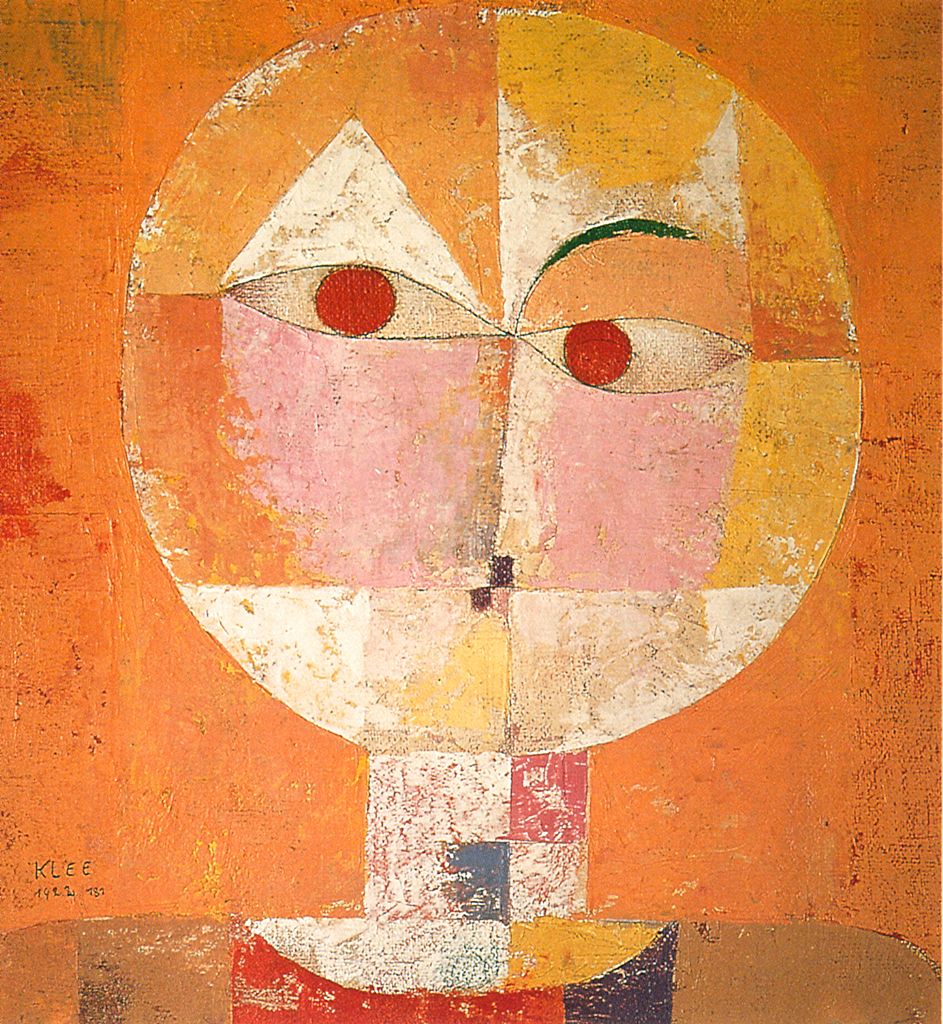Paul Klee had the kind of innocent magic that could evoke a wistful human face from the simplest of geometric forms. In “Senecio” he does it with circles for head and eyes, a straight line to suggest a nose, and two tiny rectangles where one would expect a mouth. He once wrote in his diary, ” It is not my task to reproduce appearances, for that there is the photographic plate… but my faces are truer than life.”

Paul Klee Senecio. Read More:http://www.strabrecht.nl/sectie/ckv/00/Blok%203/Geabstraheerd,%20figuratief/CKV-f0012.htm
Senecio was painted in 1922, a year or so after Klee had entered upon a happy decade of teaching at the Bauhaus in Germany. This was the revolutionary school of design created by Walter Gropius; in its artistic ferment-to which Klee contributed- were born the ideas that have since influenced everything from advertising to architecture.
ADDENDUM:
“It is not my task to reproduce appearances….for that there is the photographic
plate.”
“I want to penetrate to the inmost meaning of the model.”
“I want to reach the heart.”
“I write words on the foreheads and round the lips. But my faces are truer than life.”
“Art does not reproduce the visible it renders it visible.”
“In this way we learn to look beyond the surface and get to the roots of things.” Paul Klee (Klay)Read More:http://www.k12.hi.us/~nde_los_/paul_klee.html
The function of the artist is the mythologization of the culture and the world. In the visual arts there were two men whose work handled mythological themes in a marvelous way: Paul Klee and Pablo Picasso
- Joseph Campbell, “The Power of Myth”







 COMMENTS
COMMENTS



